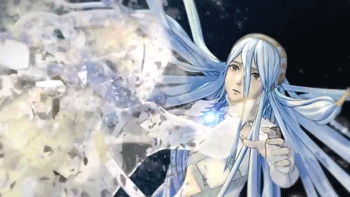#thehallofgame
Photo

#fabolous #eastcoasthiphop #hiphopforever #OGLegacy #E40 #theclick #sickwiditrecords #bayareahiphop #westcoasthiphop #hiphoplegend #charliehustle #mrflamboyant #hiphopartist #slanguage #inamajorway #thehallofgame #myghettoreportcard #hiphopfreestyle #freestylerap #rapcity #rapcitythebasement #fortheloveofhiphop #HipHopJunkie #instarap #explorepage #ifb #baltimore422 (at Cape Girardeau, Missouri) https://www.instagram.com/p/BsQBPSuACYm/?utm_source=ig_tumblr_share&igshid=ztcf6m7hm889
#fabolous#eastcoasthiphop#hiphopforever#oglegacy#e40#theclick#sickwiditrecords#bayareahiphop#westcoasthiphop#hiphoplegend#charliehustle#mrflamboyant#hiphopartist#slanguage#inamajorway#thehallofgame#myghettoreportcard#hiphopfreestyle#freestylerap#rapcity#rapcitythebasement#fortheloveofhiphop#hiphopjunkie#instarap#explorepage#ifb#baltimore422
0 notes
Text
A Regrettable Update
I love this blog, but I’m sad to announce that due to personal life intruding, the regular release schedule for reviews is effectively canned. I’m a senior in University trying to graduate in the spring even though most people think it’s going to be too hard for me. Proving them wrong is taking just about all of my time up. So, in the interest of my personal and professional health, the blog has to go on the back burner with all of my other hobbies.
1 note
·
View note
Video
Music Monday • Entry #6 • Editor's (@brightwoodentertainment) Pick: "The Hall of Game" by @e40 was released on October 29th, 1996 on Sic Wid It and Jive Records. The album featured records like "Rappers Ball feat. @tooshort and @kcihailey", "The Story", "Ring It", "Thing's Never Change" and more! ________________________________________________ Featured Song: Ring It feat. @therealspiceone, @officialkeakdasneak, and Harm ________________________________________________ "I heard "Ring it" for the first time while riding with my pops and he was being a hater and wouldn't tell me what the tape was, lol. I found out later and went to buy the cd at Walmart and didn't know that they only sold the edited versions of explicit albums, smh. I was hot. I eventually ended up having to buy the album twice. - Tyrone Davis (Editor) ________________________________________________ #e40 #thehallofgame #ringit #classic #musicmonday #vallejo #california #indianapolis #atlanta #legend #twenty4sevenmagazine https://www.instagram.com/p/CBeaRaulv-t/?igshid=1hbysyltvk26s
#6#e40#thehallofgame#ringit#classic#musicmonday#vallejo#california#indianapolis#atlanta#legend#twenty4sevenmagazine
0 notes
Text
Mini-Review - Valkyria Chronicles 4 Demo (NS edition)
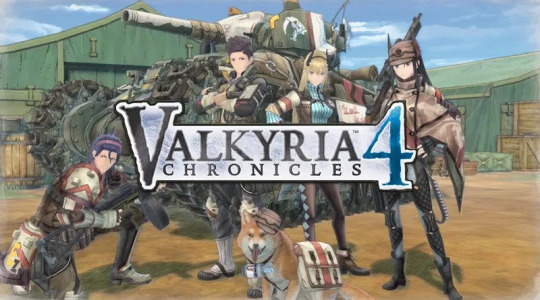
My Rating: 9/10
Release: 2018
After one cult classic, and two hit and miss follow-ups, Valkyria Chronicles returns with what the fans really wanted all along: the first game with all the serial numbers filed off. That’s not strictly true, of course, but the two games are so extremely similar that it’s hard to play Valkyria Chronicles 4 without looking around for characters from the first game.
Once again the action of this tactical RPG takes place during the “Second Europan War”, a fantasy-world conflict heavily inspired by the real-world first and second world wars… but with most of the worst/controversial things glossed over or abstracted to fit a more lighthearted, anime-inspired tone. The Federation forces mimic WW2’s allied forces and occupy the western side of a vaguely Europe-shaped continent, and the Empire occupies the western half. In Valkyria Chronicles 4 the action follows an elite unit of federation soldiers centered around, once again, a tank. Gameplay is much the same as in the previous games, with the addition of new mortar based units for both the player and the enemy. Likewise, the plot follows many of the same themes as previous games in the series, with story arcs surrounding a daring counter-invasion aimed at taking the Empire’s capital.
The demo includes the prologue, first two chapters, and a demo-exclusive bonus mission. This amounts to enough content to complete all the basic tutorials and recruit all the core characters into the party. The bonus mission is a much more difficult combat that shows how enemy mortars and the late-game snowy map missions will work, however, there isn’t any story content that will be missed out on by not playing the demo.
Gameplay is pretty much cloned from the first game, with the player selected a set number of units to take into battle. Player and enemy turns alternate, with each side receiving a set amount of Command Points that can be issued to take control of units or issue ‘orders’ which typically apply stat buffs or healing effects. When Command Points run out the turn ends, though a turn can be manually ended early so that remaining command points are rolled over to the next turn.
There are now six classes of units, plus the tank which is its own unique unit. Upon selecting a unit, which incidentally is a little tricky to do because moving the cursor to the unit on the map doesn’t seem to highlight them reliably, the player will take command of them, zooming from map view into a third person, 3D gameplay mode. Each unit has a set amount of Action Points that determine how far they can run in a given action. Their movement speed and total AP varies by class. The same unit can be selected multiple times per turn, but they will start with less total AP each time and many classes also have limited ammunition that recharges one bullet per turn.
Valkyria Chronicles shines because of its judicious implementation of real-time elements to the tactical RPG formula. As the player moves their units they are vulnerable to potshots from any enemy soldiers that have spotted them, and this necessitates dodging in and out of cover as well as thinking several moves ahead to judge how enemies will respond to the player’s actions. Tapping the right trigger to aim a weapon will pause interception fire so the player can manually aim the gun or explosive they plan to use in order to destroy cover or maximize damage and/or hit chance by aiming at a specific body part. This keeps the action surprisingly fast-paced and immersive for a tactical RPG. The mortar combat adds a new layer of difficulty and versatility to the game. Enemy mortars will rain shells down on a selected allied unit unless they’re in cover, doing large chunks of damage. The mortar units themselves are weak but usually in fortified positions, making them a high priority but difficult to reach target. Meanwhile, friendly mortar units are slow and vulnerable but extremely powerful. They’re effective against both tanks and infantry, and fill a much-needed niche with their ability to attack fortified and elevated positions that the tank can’t reach. The only real issue with the implementation of this unit type is the fact that it renders the lancer unit, a dedicated anti-tank class, mostly obsolete.
There’s very little innovation on display in the demo. Fans of the original game will like Valkyria Chronicles 4, but if players had issues with the original game those issues probably still linger. The tone is still light, filled with teenage hijinks, romance subplots, and anime tropes. It references the technology and themes of the world wars but doesn’t promise to explore them in meaningful ways. It looks like Valkyria Chronicles is shaping up to be exactly what it promised to be, a direct successor to the original game without new gimmicks or flourishes to distract from the core content.
1 note
·
View note
Text
Review: Far Cry 5

Release: 2018
My Rating: 7.5
Far Cry 5 is a game that’s sold itself on its premise, and the controversy that premise has generated, more than anything else. In contrast to earlier entries in the series which always took place in far-flung locales, this game occurs in the fictional Hope County, Montana, USA. The antagonists in this game are all part of a Christianity-Inspired cult that takes over the aforementioned county. This notion was inflammatory to some segments of the American population. Personally, I found it brilliant. As far as I’m concerned, it’s about time Americans (and the rest of the world) enjoyed a story where American culture gets the same treatment as our media happily visits on other countries.
That said, I found myself fairly disappointed with the way the game executed a surprisingly good story. The core members of the cult: their leader Jacob Seed, and his three siblings, are all fully realized antagonists and creepy as all get out. But the supporting cast just isn’t up to par. Most of the ‘characters’ are simply quest givers with a bit of backstory that the game then treats like the player should be emotionally invested in. Even the nine “guns for hire” the player can recruit are little more than their recruitment missions and a bit of party banter. Funnily enough, the three animal companions called ‘fangs for hire’ are usually far more personable than their human equivalents. There are some really funny, dark, poignant and all around powerful moments in the game but they’re often abrupt or intrusive. Ultimately, Far Cry 5’s open-world structure erodes the impact of its writing.
The player takes the role of a voiceless, personality-less rookie sheriff’s deputy who was part of a team that tries and fails to arrest cult leader Jacob Seed. Instead, it is the law enforcement officers who are taken prisoner as the cult rises up and cuts the town off from the outside world. Only the deputy escapes. It then becomes the deputy’s mission to rescue their fellow deputies, oust the cult leadership, and build up a local militia to assist them with goals 1 and 2. The open world is divided into three major regions, each belonging to one of Jacob’s siblings. Story progression is measured separately in each region and is demarcated by filling up a ‘resistance level’ progress bar by completing quests or generally being destructive to cult membership and property. There are three levels of resistance level, and at each level an event occurs to symbolize the Deputy’s progress at eroding the cult’s hold on that region. These events feel rather intrusive against the otherwise completely unconstrained nature of the game. It doesn’t help that the first two events in each region are typically a kidnapping of the deputy that can’t be avoided, followed by a daring escape. It makes one wonder why after kidnapping fails the first couple times the cult that’s happy to execute non-believers by the side of the road just doesn’t pop a bullet in the deputy that’s making their holy war harder.
The final event, the final confrontation and boss battle, is a complete 180 from the other events. These multi-phase boss battles and story sequences are usually well structured and find ways to make encounters interesting and satisfying, which is something most first-person shooters struggle with. It helps that each of the four Seed siblings have their own non-combat hooks that get woven into the battle, as well the fact that each of them is horribly unlikable.
Combat, likewise, faces a lot of the same inconsistencies. When it works, it works, but when it has a hiccup the deputy dies. Or attempts to. Once the deputy’s HP is reduced to zero there is a period in which they can be revived. The player can extend or shorten this window by pressing buttons to ‘cling to life’ or ‘give up’. If a gun for hire can reach the deputy before the window runs down the deputy will be returned to the fight with minimal HP, even if the player was hoping to die and respawn at a checkpoint. Either way, the deputy is going to die a lot.
The game aims to hit that thin line of high mortality, fast-paced combat but ultimately wobbles back and forth over it like a drunk. Armored enemies can take full clips of ammunition to the head without blinking while the deputy dies in the space between realizing they’re being shot at and identifying where the bullets are coming from. In a game where the enemies have an arsenal of snipers, helicopters and fighter planes, this can quickly become an unending nightmare as the deputy respawns or revives in combat zones or on top of hostile wildlife.
To preserve their life against this assault, the deputy can carry up to four guns, two melee weapons and a grab bag of explosives on them at any one time. Switching between these is done by holding down the right shoulder button and selecting a slot containing the desired gun, or the slots that contain the melee weapons and explosives. Each melee and explosive slot has three item types in it, which must be further navigated to with the left and right d-pad buttons. This menu, and a fairly minor crafting sub-menu, don’t pause the game so it’s always best to estimate the necessary loadout before entering combat. The currently selected explosive is mapped to the right bumper, while two weapons (and sometimes the fishing pole if the player is sloppy) can be mapped and quick-swapped via a face button. Holding the left trigger causes the deputy to aim down the barrel (or scope) for distance shots, and right trigger is fire.
Generally, the combat flows well and feels good. Shots are quick to line up, heady shots are effective but not too easy to get, and if the player is using a weapon with a scope tapping a button will cause the deputy to hold their breath and reduce weapon sway for a short moment. Explosives usually go where they’re desired to go, and stealth kills usually go off without a hitch. The AI isn’t the best on the market, but it’s generally competent. Enemy combatants certainly feel like they know what they’re doing, and most of the time friendly units won’t be completely useless and/or stupid. I did have few AI and combat-related issues, including animal companions running in front of moving vehicles and getting killed, as well as NPCs. Other times the reticles that indicate whether or not a target is a friendly or a hostile wouldn’t pop up until an enemy was too close, had killed their hostage, or the player has already pulled the trigger on an NPC. Again, not the tightest gameplay experience but and occasionally frustrating, but not game breaking.
The game shines in the ways in which it’s balanced its combats and encounters so that the player is free to choose a desired play style and stick with it. Every weapon in the game, once purchased or unlocked via story, can be picked up for free at shops. Almost every one of these guns can be tailored with upgrades to increase accuracy, damage, number of bullets per clip, ect. The weapons run the gamut from shovels with smiley faces painted on them to handheld artillery, slingshots to LMGs. More and more powerful weapons are unlocked throughout the game as the enemies become tougher.
Vehicles are similarly handled, though they must be purchased and spawned from specific garages. There are no horses, which I found disappointing for a game literally set out west in ranch country. But, there are ATVS and more cars than you can shake a stick at, as well as attack helicopters and fighter planes. The cars are convenient, especially those with mounted guns, but the aircraft are essential. Some targets are nearly impossible to take out on foot, but a well-placed bomb from a Spitfire will sort them out nicely. Flying and driving are a little sticky. Ground vehicles and each aircraft have a different control scheme, so good luck keeping the weapon buttons straight or remembering how to land. 90% of the time driving or flying is fun and relaxing, the other ten percent is having the auto-drive run over civilians, planes blowing up after coming within ten square feet of a tree, and getting cars stuck somewhere real stupid after spinning out for no discernible reason.
If that doesn’t work out, going on foot will take longer but is an enjoyable experience. Montana makes for a beautiful and unusual backdrop for a video game. Far Cry 5’s team did a great job recreating it in gorgeous detail… minus any bugs, extreme weather or unpleasant winds on the mountains. The series’ history of open world design also shows because there is far more to discover than the quests will take the player to, and it’s easy to get lost going hunting, fishing or base jumping. A minimal HUD and intrusion from quest markers is both blessing and curse as it keeps the player in the game, but requires some serious squinting when looking for something specific.
Far Cry 5 is a good game. It’s solid, it’s fun. But it’s also getting a lot more mileage out of its premise than anything else. Once the novelty of taking a gunslinging adventure through America’s cultural dark secrets wears off Far Cry 5 will probably fade into the mist of popular shooters to be lost to time, much like Hope County’s quiet, dusty roads.
5 notes
·
View notes
Text
Review: Fire Emblem: The Sacred Stones
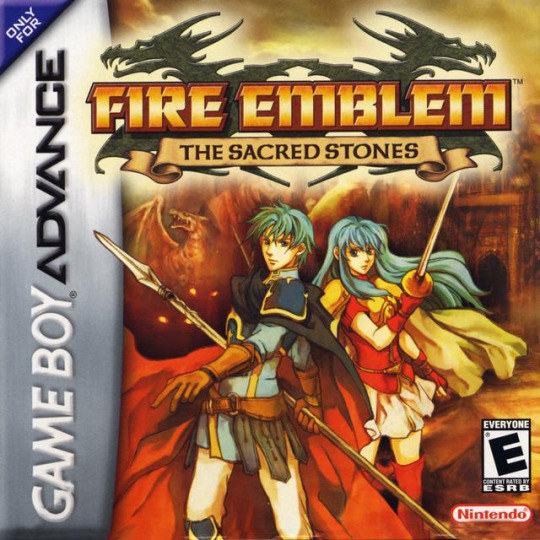
Release: 2004
My Rating: 8/10
Fire Emblem Sacred Stones was only the second game in the series to be released outside of Japan. The series was already an old standard in its home country but was only getting started outside of it. For that reason, Sacred Stones had a lot to do in one game. I can’t speak to how Japan received the game, but in the states (other than complaints that it was ‘too easy’) the game was generally well received and well liked.
Sacred Stones featured a new world and new protagonists: twins Eirika and Ephraim. The two are the heirs to a kingdom that has suddenly been invaded by a former ally. They both escape and embark on separate missions, though their paths often cross and eventually reunite. Early in the game the story branches and the player will have to choose who to follow. Ephraim goes to the front lines of the war, Eirika embarks on a lengthy quest to gather allies.
As in other Fire Emblem games, magic and prophecy inform the story. The titular Sacred Stones are scattered between five nations and are responsible for keeping an ancient Demon King locked away. The suddenly evil Grado Empire has launched a war of world conquest to seize and destroy the stones, and with each one destroyed more and more monsters appear in the world.
Both protagonists travel the world gathering elite soldiers to help them fight. These characters are what form the party the player takes into battle. As in previous Fire Emblem games, there are many starting classes with various proficiencies in melee weapons, bows, magic, or healing. Each class has its own strengths and weaknesses in addition to the weapons triangle that determines the advantages/disadvantage each kind of weapon has against the other types. As is traditionally the case in this series, swords have an advantage over axes, axes over lances, and lances over swords. Specific class advantages might be mounted knights with high speed but with vulnerability to horse-slaying weapons, slow knights with heavy armor that can be flattened by magic or armor-slaying weapons, and a handful of flying units that are vulnerable to bows.
As units participate in combat they gain levels until they reach a level cap of twenty, with few exceptions. Those exceptions are the journeyman class, which takes the place of the villager class and class changes automatically at level ten, and a dragon shape-shifter who never class changes. Every other base class, however, has the ability to change classes at level ten or above by using a special one-time use object that must be found on the various maps throughout the game. Upon class change the player will have a choice between two advanced options for that character that either offers them enhanced versions of their current skillset or a broader skillset.
Another form of growth occurs through the support system. Certain characters that engage in combat beside each other will build support points that will eventually allow them to have conversations with one another during battle. After this conversation occurs they will gain a support level that will give minor stat bonuses to the pair when they fight side by side. There are three ranks of support, C, B, and A, with A being the third and best tier. However, each character may only perform a total of 5 support conversations, which means they can only complete one conversation tree. While, as a gameplay mechanic, it makes sense to encourage the players to specialize, and the low number of supports combined with it taking a long time to unlock support conversations helps the pacing, this means that it’s going to take several play-throughs to view all of the conversations a player might be interested in. Basically, it blocks a good chunk of possible character development behind replaying the game which is awkward and a little annoying. Does the average player unlock every support option on a run through a fire emblem game? No, they most certainly do not because it takes forever, but it’s a little frustrating to have the opportunity explicitly taken away.
The story is advanced by chapters that each have a battle at their core, though after the first ten hours or so the player is given the freedom to choose between a few different battle locations before advancing the story. There will always be a new story-battle to engage in but eventually there will also be a training-tower as well as random pop-up battles with monsters. The training tower and monster battles give opportunities to level up lagging characters or build up support, but these battles are fairly repetitious and lack the unique hooks of the story battles.
Once the player has decided where to enter combat they will be prompted to choose their units for the battle. Helpfully, by accessing the map view the player can view enemy units, their positioning, and any special features of the map. Tapping the right shoulder button on any menu option, or object on the map, will generally open a window providing explanation or more detail, which is essential in judging enemy strength and weapon loadout. From the battle prep menu the player can also choose their battle party, check their support rankings with one another, switch items around, and even arrange the party within their pre-selected starting locations on the map and finally save the final decisions before entering combat. If the player needs to reload for any reason they will be offered a chance to resume a suspended game which will plop them right where they saved in a battle or where they turned off the system after having one of their units killed in battle. If a unit did bite the dust, the other option is to ‘restart chapter’, which will appear as though the player has been sent back to the beginning of dialogue and battle prep, but the player will find all their saved arrangements still intact after they’ve skipped through the repeated dialogue cutscenes.
Once the player presses the start button and initiates combat they will be dropped onto the grid-structured map. The feel of Sacred Stones is very classical tactical RPG. Each unit has a certain amount of distance they can travel each turn, and an action they can use to initiate combat, heal, or interact with the map in some way such as opening doors, using ballistae etc. By scrolling to and clicking on enemies the player can see their movement range in blue and the reach of their attacks in red. With this information, the player arranges their units to maximize their weapon and terrain advantages. The aim is to approach enemies with the player’s strongest units while keeping vulnerable mages and healers protected from attacks. Often there will be set pieces on the maps to interact with such as houses or shops. Making it to these locations before the enemy is tricky but often yields considerable reward.
The player and the enemies have alternating turns in which to move units and perform actions. The player goes first, but then they must wait until every enemy unit has moved before taking another action. Most melee units must be in the square immediately beside an enemy to attack them, but some weapons and magic can attack from one or more squares away, and even attack across a square with a friendly unit in it without harming them. When combat is initiated the unit’s stats determine what their damage, chance to miss, and what the chance of a critical hit is. If one unit has significantly higher speed than the other that unit may attack twice or more in one combat turn. The attacking unit strikes first, but if the unit survives it may counterattack. A critical hit is a devastating attack that will kill the recipient outright more often than not.
A certain segment of the Fire Emblem fanbase has complained that Sacred Stones is too easy, but I find that the difficulty balance is just right for a new to moderately skillful player. Perhaps it needed an extra-hard difficulty mode for the die-hard tactical RPG fans to really feel satisfied, but Fire Emblem is a series that has always struggled with walking the line between welcoming to newcomers and accommodating challenge seekers.
Some battles are tricky and will require some experimentation to master, but most can be beaten on the first or second try with a careful approach. Likewise, combat is just deadly enough that a unit left completely exposed likely won’t survive the turn, but if a character is appropriately leveled they can usually survive one attack. As Fire Emblem Sacred Stones’ characters die permanently if they are KO’d in battle, it’s comforting to not have to restart the chapter completely for every mistake.
Ultimately, Fire Emblem Sacred Stones is a really solid game. It doesn’t do anything revolutionary for the series, but it did keep it going strong as the second game to be made available overseas.
1 note
·
View note
Text
Review (Revisited): Kingdom Hearts Birth By Sleep
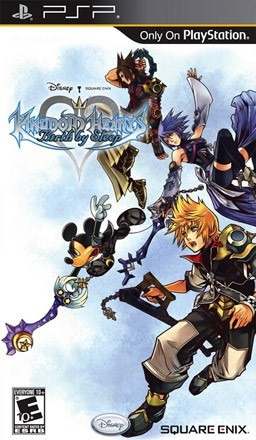
Release: 2010
My Rating: 8/10 (up from 7/10 in my original review)
Kingdom Hearts Review Series: 1/8
Review under the cut,
Author’s Note: Typically I try never to repeat games on my blog. However, when I posted my Birth By Sleep review it was actually an archived copy from back when I started reviewing games as an exercise in 2014 and I hadn’t actually played it since then. When 2018 began and I was choosing my review series for the year I thought long and hard about making Kingdom Hearts 2018′s series and ultimately decided against it. And then, between the fact the old computer I play Tomb Raider on (the series I chose instead) dying and needing new parts, Kingdom Hearts III -still- projected to come out this year, and my need to play the series beginning to end before Kingdom Hearts III comes out I caved. The good new here is I can go over this review, give it desperately needed edits and an updated opinion. I’ll also be reaping my just deserts via having to play all the Tomb Raiders along side the Kingdom Hearts games this year, on top of everything else I want to play. Playing this again has also allowed my to develop a route list of my favorite path through the game (how to juggle all three characters and make the timeline make to most possible sense). I’ll upload that the second I’ve got it digitized and formatted.
When Kingdom Hearts: Birth By Sleep was announced many of us didn’t stop to ask for details before rushing out to buy a PSP. It was a game that’s very existence promised so much: answers to lingering questions in the Kingdom Hearts series, a convenient starting point to newcomers and perhaps a fresh perspective on the series. Some of those expectations were delivered, some less so.
Birth By Sleep rewinds the clock to about ten years before the events of the first game, putting the player in the shoes of three different Keyblade bearers, each with their own individual story. These three routes can be played separately or all at once.
I purchased this game a week after release but it took me four years to finish for the first time. The game is structured in such a way that it encourages playing the three stories in sequence, but I didn’t enjoy the interweaving nature of the three character arcs until committing to playing through all three plotlines simultaneously. I preferred the game this way, but unfortunately there’s not an easy method of switching between save files. You can neither choose to load another character’s file in game nor easily return to main menu to do so. In fact the player must quit the game entirely and reboot it to do so.
The three stories occur during the same time period, with each character experiencing different angles of the story. Playing all three at once generally establishes a better feel of a complicated story, but also highlighted continuity errors where character show up in the same place at once or take inconsistent amount of time to travel from one place to another.
Additionally, rather than clarify the Kingdom hearts universe, the addition of Birth By Sleep serves mostly to complicate it by adding more layers to the mystery of what kingdom hearts is, who the keyblade wielders are (and just how MANY of them there even are/were) and who, precisely, has been masterminding all these evil plots that cause young heroes to set out. This said, the story is heartfelt and emotional, with emphasis on the power of friendship. If you’re a returning fan of Kingdom Hearts or Final Fantasy the game provides some fan service in the form of cameos by a good portion of Organization 13 and one Final Fantasy character. As always, the game also visits several Disney worlds, some Kingdom Hearts staples and others new. Their inhabitants make appearances, and occasionally your character will from a relationship with them that will allow them to D-link with the character, allowing new unique abilities.
As the three stories are complete the game gives you an overall completion score. The more completion you amass, the more of the post end-game story you unlock, including an extra level that ties off the game’s story and leads into the rest of the series. Unfortunately, the ability to unlock all the post game content is tied directly to the difficulty setting of each completed path, as well as the completion of some truly arbitrary goals.
At first the game does a good job of keeping the worlds interesting and juggling the different characters so that you never feel like you’re repeating the same steps three times in a row. However in late game the levels begin to drag and there’s less variation between the story each character experiences in the same world. For some the game may begin to feel grindingly repetitive.
It is not helped by the fact that unless one invests time in exploring the combat and crafting system the enemies can sometimes suddenly level hike, leaving the player frustrated. Basic combat and exploration mimics other kingdom hearts games with the player obtaining simple abilities like jump, dodge and attack that get expanded on as the game progresses. What is new, however, is that in addition to magic, there are combat abilities that can be activated at will. You scroll through a wheel on the left side of your screen and trigger commands with the triangle button. These abilities will level up and will then can be used in a crafting system to produce new commands. This is a large part of character growth and customization that does need to be managed.There is a in-game store that can supply new moves, but its prices quickly grow steep and the best moves are only revealed after crafting them or finding them in treasure chests on the games’s levels.
Some of the other features the game pushes are less helpful. The D-link system mentioned above takes the place of traditional summons. This is most useful early-game before the player’s list of commands is very long. D-linking fully restores HP and gives characters access to new abilities from the character they’re ‘linked’ with. Another feature, the command board, is a board game themed mini-game in which characters are used as game pieces and the points earned on the board become experience. This can be useful for leveling commands, but can become somewhat tedious and is luckily completely ignorable. Meanwhile, the Mirage Arena takes the place of the Coliseum in other Kingdom Hearts games. There, online or off, you can battle through tournament style events to earn experience or participate in some of the mini-games present throughout the game’s levels.
Combat makes up a large part of the core gameplay, and it’s fast paced and usually quite varied. Bosses present decent challenges without becoming too bad, unless the player has fallen under level (or under-crafted, as the case may be.) Shotlock commands allow the player to charge a special, crowd-clearing attack. Finally, the limit break system is generally fun and satisfyingly powerful. In later game it is even possible to limit break the limit breaks, which is even more fun. However, limit breaks also include special abilities and finishers that can become minor hindrances. This is usually related to being stuck in a limit break enemies that just spawned in are strong towards, or having to watch lengthy animations play out after all the enemies have already been destroyed.
It’s worth a quick note to mention Birth By Sleep is a game that encourages the player to install disc data to a memory card to reduce load time. An investment in a larger memory card for this purpose is highly recommended because the load times in Birth By Sleep are ubiquitous, and even with maximum amount of data installed, the game bogs down in acts as simple as opening the menu.
Graphically Birth By Sleep heavily recalls the other Kingdom Hearts games with its anime styling and bright, solid colors. This also helps cover up the PSP’s graphical limitations which only very rarely become apparent. The worlds perhaps tend toward small, especially as most areas are reused three times. Some worlds and stories are significantly more expanded than others, which can be a little awkward.
Birth By Sleep was an experience plagued with highs and lows. It answered some questions but smugly left players with many more, as is the series’ wont. Furthermore, the game has a decent story with power that’s hampered by confusion and redundancy, generally good pacing that sometimes ground to a sudden halt, and a feeling that the game wasn’t quite everything one was expecting. Like most other Kingdom Hearts games what this needed more than anything else was a thorough edit. Taken as a whole Birth By Sleep is a game you either forgive and love anyway or remain exasperated with forever. It is probably not the best entry point for new players which is a little disappointing in a prequel, but if you’re a longtime fan it’s definitely in need of a play.
My opinions have softened somewhat on a second pass through the game, probably because now that I’m fore-armed with knowledge of plot twists the story makes more sense. That said, there is something rather stubbornly smug about how confusing the game’s story is, and it could have done more to welcome new players. Especially as it’s now been re-released onto more mass market systems. That said I still believe it’s a solid outing and on-par with Chain of Memories and 358/2 Days as must-play Kingdom Hearts Spin-Offs.
#kingdom hearts birth by sleep review#kingdom hearts review series#thehallofgame review#long post#text post
1 note
·
View note
Photo


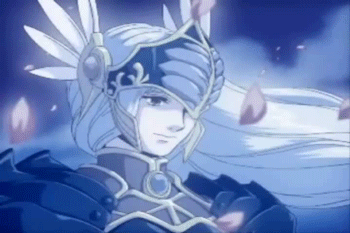

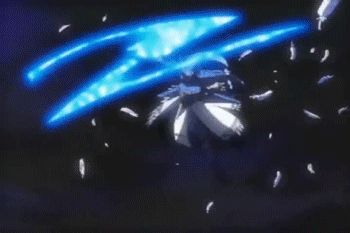
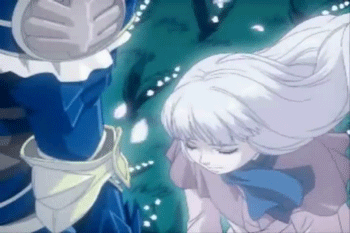
It shall be engraved upon your soul.
Valkyrie Profile (1999)
98 notes
·
View notes
Text
Review: Tomb Raider III: Adventures of Lara Croft

Release: 1998
My Rating: 8.5/10
The year is 1998 and Tomb Raider 3 has dropped a mere two years after the first game, a development cycle that, today, I just can’t fathom. Most of the fumbles of TR2 have been ironed out… with the exception of underwater combat… and locales are once again weighted to wildernesses and ancient ruins. TR3 feels a lot like the first game and manages to recapture its simple, addictive appeal. Full disclosure, I am playing Tomb Raiders 3-5 on a Windows XP emulator for the sake of time and lowering stress in the process of these reviews. It should be noted that playing any of TR 2-5 on windows 10 is difficult and unstable, but not impossible.
Once again the player joins Lara on the trail of some vaguely defined artifact, this time in North-East India. But, as is so often the case when one goes tomb raiding, this artifact is one of a set of four cursed treasures forged from a meteorite. Armed with the vague location of the other three artifacts, Lara sets off around the world to collect them. In the process, she discovers a deep, dark threat that must be stopped…. So, basically, the plot of every Tomb Raider. This time around the game has a Polynesian theme, which is utterly refreshing because that’s not a culture that gets featured often in games.
While the graphics and gameplay are mostly the same as the previous two games there have been some updates. Lara, and her flowing braided hair, look a touch better and are both noticeably better animated. Curved surfaces, water effects, and even weather conditions are all better looking and more graphically stable. And, for the first time, the player gets to choose what order they pursue the core missions of the story. After the India arc is closed the player is given the choice between London, Nevada’s Area 51, and a South Pacific island for their next locale. It’s delightful to be given this small control of the narrative and pacing, especially after TR2 locked the player in unending hours of modern levels.
Completely upending the control scheme of the first two games, Lara is given two new platforming abilities. The first is the ability to sprint, which helps dodge traps and mitigates some of the inevitable backtracking time. The second is the ability for Lara to crawl, which as soon as it’s been implemented, the player realizes has been sorely lacking. This means Lara can now duck under low overhangs and pull herself up into small cracks in the wall to go exploring. While only slight changes in the scheme of things, these two changes enable a new dynamism in level and puzzle design.
Tomb Raider already had a history of puzzle-like levels that looped back through themselves with new passages opening, Lara traveling above and below the main body of the level to come out the other side, being dumped through trap doors back to where she started... Well, Tomb Raider 3 focuses that trend into a honed edge. Almost every level feels like a maze that resolves itself into a relatively small space. The balance of difficulty and ability to solve the puzzles in a relatively short amount of time is also just right. The solutions to getting stuck are rarely farther than retracing Lara’s steps to find a missed passage or movable block in the wall, though sometimes that can mean a great deal of backtracking to find when the said passage was missed.
Gameplay is largely cloned from the earlier games, though it’s significantly less deadly. This is partly because the India arc is designed to be very forgiving of fumbled jumps (though it does have some very obnoxious and deadly traps rooms) while the player learns and partly because there are now floating crystals scattered around the levels that will partially heal Lara. These crystals also act as save-portals on the console versions of this game. The health-crystals might make things too easy, however, as it’s now possible to horde mountains of health packs. The crystals are less frequent in the late-game, but by then most player’s will still have abundant health packs left over from the early levels.
Progression is based around keeping Lara alive through an endless series of daring acrobatics. Which is to say the game quickly trains the player in the art of knowing how to aim their jumps, combine jumps, rolls and the grab button to complete maneuvers that must be handled with absolute precision to avoid killing Lara and having to reload. The addition of sprinting and crawling with their own buttons caused the default control scheme to feel a little whacky on the PC, so it’s my advice to immediately change some of the key bindings around so they’re less on top of each other. Unfortunately, this also means the player will have to switch control schemes manually every time they boot the game, but it’s well worth it to avoid countless deaths because of hitting the wrong button at a pivotal moment. Some small, more subtle things have changed. Driving, in case the player was used to the odd feeling controls, has been overhauled and is once again completely unintuitive to newcomers and veterans of TR2 alike. The sidestep buttons, formerly their own keys, are now accessed by holding the walk button and tapping left or right. People familiar with TR and TR2 might blanch and wonder at how this extra step affects the precision needed to activate levers and flee deadly traps… To be honest, it’s a pain, but the sprint button very nearly makes up the difference in timing. It’s not perfect, but it’s not as bad as it might have been.
Combat sees basically no changes, besides more guns and therefore less ammunition for each. Lara still draws her assigned weapon and uses the action button to fire continuously at an auto-aimed target while jumping and rolling to avoid as much damage as possible. A few smart tweaks are introduced to the formula of the enemies. Poison, which can be cured via a health crystal or health back, will slowly and ominously drain Lara’s health. Boss encounters are now designed to force the player to move around the arena and platform rather than find a good bit of cover and hop in and out till the boss falls.
By the second game, Tomb Raider had a formula. By the third game, the developers had realized what the best parts of that formula were and emphasized them. While not quite capturing that singular spark of the first game, Tomb Raider 3 does a great job replicating it and feels like the closest the series has ever come to bottling the same lightning again. It’s fun, dynamic, interesting, and a solid twenty hours of diverse levels.
2 notes
·
View notes
Photo





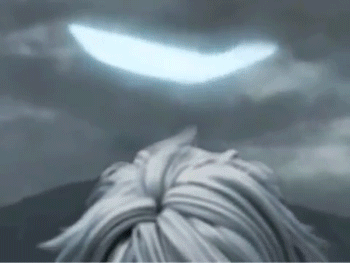

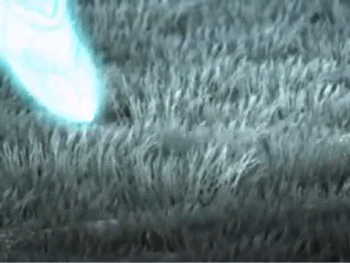

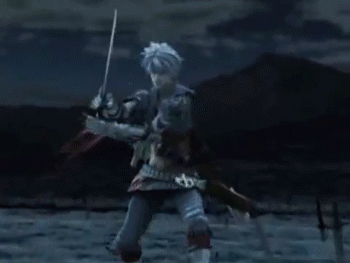
“The Chooser of the Slain”, “Battle Maiden” be her names,
Yet others has the valkyrie to those whose kin she claims.
To the widows and the orphans an angel of death is she,
The thief of their beloved, the accursed Valkyrie.
And so begins a tale of vengeance and betrayal.
Destiny by sinner sought, tragedy by power wrought.
Valkyrie Profile: Covenant of the Plume (2008)
61 notes
·
View notes
Text
Review: Star Wars: The Old Republic

Release: 2011
My Rating: 7/10
First of all, happy (week of) May the 4th! In the spirit of celebrating one of my favorite franchises, I’ve subjected myself to the closest thing we’ve had to a new Knights of the Old Republic game in a decade. Which is a MMORPG that’s been patched to be playable end to end as a single player, though, unfortunately for me, that does not make the other players invisible. If you like swinging lightsabers online with your friends Star Wars: The Old Republic is probably fine. If you’re more of a single player galaxy saver it’s frustrating to look around and realize what a good single player RPG this could have been.
This review is going to focus primarily on the single-player experience. I’m sorry, I know that isn’t the point of this game. However, I’m not qualified (and also don’t want) to comment on the multiplayer experience.
These days the SWTOR base game is free to play, though it’ll take every available opportunity to remind players that if they pay they’ll have all the convenience features that are barred from them unlocked. However, if you’re new to this game and you’re also interested in the story-expansion packs Knights of the Fallen Empire and Knights of the Eternal Throne, they go on sale occasionally and are offered in packs that include two free months of premium membership to the base game. That’s what finally got me to shell out some money and I haven’t regretted it yet. Play experience between free and premium players is very similar. Premium players get a handful of the game’s premium currency with which they can buy mostly cosmetic upgrades, are given earlier access to vehicles and the sprint skill, and an alternate currency to pay for all the obnoxious things the game paywalls behind the currency earned in-game such as expanding the player’s inventory.
After booting up their first game the player will be offered their choice of one of eight backgrounds. The backgrounds are split between light side and dark side affiliation as during the days of the old republic there were both a Republic Alliance and a Sith Empire at war with one another. Once the player has decided which side of the war to join, they’ll choose between four classes which are more or less the same on both sides of the light/dark divide, just with different window dressing. There are two types of force user: combat focused and force-power focused. There are also two types of non-force user: engineer and spy/smuggler. Each class will learn different moves by going to a trainer for their respective class as they level up, but their progression and combat is basically structured the same way.
Story, likewise, is only nominally different for each class on either side of the war. In each campaign the player’s character is brought into the war effort under a superior officer and then sent out to do their bidding. The core story is mostly a framework to get the character from world to world to take on story and side quests. Each world has its own quest track that’s unique to the planet and separate from the core story. I found these to be the richest story experiences and carried the strongest world-building and thematic threads of the game. There’s also a pool of ‘weekly heroic quests’ on every world that can be completed solo for goodies and experience, or just to fill the expanses of open space in the worlds where nothing is going on. Most of these quests have simple structures such as: go to a place and kill a certain enemy, or go to a place and collect a specific item. The problem arises when multiple people are perusing the same quest at the same time. It’s an unfortunately common sight to see players milling around a spawn zone trying to be the one to click on the boss enemy first and therefore be the one to collect the kill. All the other players have to wait until the too-long respawn period passes.
There are a smattering of other mission types that take place in isolated mission zones outside the story-worlds. Space combat missions are fun, arcade feeling missions where the player hops into their starfighter and shoots down enemy fighters and tries to stay alive until a timer runs down. There are also player vs. player maps that can be toggled and, when a big enough group is assembled on the server, the player will be transported to that map. Likewise, there are also ‘flashpoint’ missions that require a large party to tackle and operate like the PvP missions.
After some limited character customization (with plenty of options visibly locked behind a pay-wall and the game’s premium currency) the player is dropped into the tutorial world, which is fairly easy and likely to be the hardest world for them. Combat is fairly unintuitive. There’s no auto-attack, which means the player needs to individually select each attack from a quickbar by clicking it or pressing the number key it’s toggled to. Unfortunately, with the same fast-paced combat style of Bioware’s single player games, this is obnoxious. Especially as in most combats, after the player has used their strongest abilities and they’re on cooldown, they’ll be sitting there mashing basic attack buttons repeatedly. The healing items and stat buff items only give a slight assist, so they’re probably not worth digging through the inventory that doesn’t pause the game for unless things are so close that it’s just going to take a small shove to push the player over the edge to victory.
This probably isn’t going to be an issue for long though, because due to the low number of current active players on every level and the high aggression of the goons infesting every level, the player is going to be in constant combat and will probably soon reach the level-cap for the world they’re on and exceed it. The game adjusts the player’s level to reflect the level cap of the world they’re on, but they’ll still gain levels in the background which will be reflected as soon as they land on a level with a high enough level cap. If this isn’t enough to have the player cruising along, they’ll collect their first companion toward the end of first level. This companion has a combat style chosen to complement the weaknesses in the player’s build. They’re also structured somewhat like a traditional Bioware game companion in that the player’s actions will earn their approval or ire, they can be given gifts to earn extra approval, and can have conversations with the player in special events. This feels a little odd in the context of a MMORPG, but adds a bit of welcome additional story content to a single-player run. There are multiple companions to be found and befriended throughout the game, but most won’t be encountered until a fair bit into the story, which is unfortunate. Companions have up to three ‘crew skills’ which allow them to craft equipment and be dispatched on resource-gathering missions. However, every crew-mate has the same set for some bizarre reason. Therefore it’s impossible to have a crew-member for each specialization at the same time. Instead, if the player wants to go from an armor crafting build to a weapon crafting build, they have to return to a certain world and retrain everyone in the new skillset. It’s a strange choice that seems designed to eat up time more than anything else.
This is an unfortunate facet because it undermines an apparently extensive crafting/customization system that’s in the game. The difficulty in having crew members produce a range of items, and the fact that the strongest weapons and armors often lack upgrade slots, means that’s it's really easy to forget/ignore these systems.
SWOTR is just a kind of odd experience all around. It encourages players to group up and play together, but story missions can only be advanced by one player at a time, and the dungeons and side missions are easy even as a solo operator. The game is built and structured like a single player game but without the content to really entertain or reward single players.
The game is fine but that’s it. It just scratches the itch for a new Knights of the Old Republic game, but weakly and in a way that you just know means the itch will come back in a few minutes. The worlds are pretty and there are a few fun story moments and choices alla classic Bioware, but they’re thin and watery, especially when compared with the sheer time-sink and grinding required to get to them. Unless you’re a purist, I recommend just skipping to the post-game story DLCs if you’re looking to recapture that KOTOR feeling in SWTOR.
1 note
·
View note
Photo
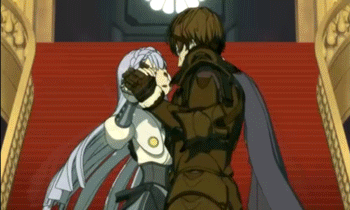
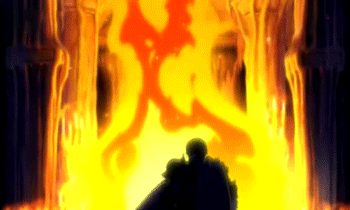
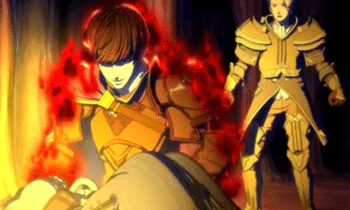




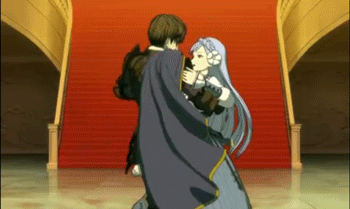
It seems a terrible waste that you would come to a ball just to be alone.
Perhaps. But mine is a lesser house and I do not seem to find much favor here. In the end, I tired of all the eyes on me and retreated.
You are mistaken, my lady. You were invited here- you have the right to carry yourself as anyone else… Rinea. A lovely name. May I have the next dance?
Fire Emblem Echoes: Shadows of Valentia (2017)
415 notes
·
View notes
Photo
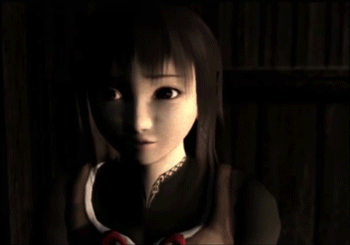

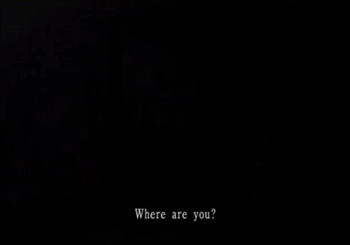
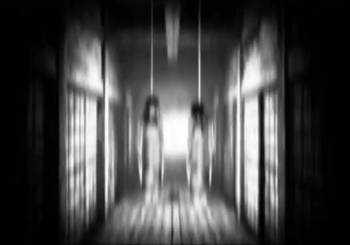


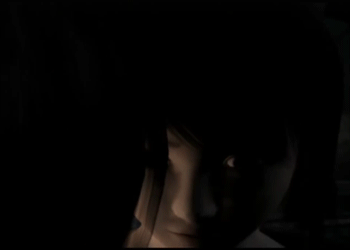

#so happy to be to start posting this#fatal frame 2#fatal frame 2 gifs#thehallofgame gifs#hanging tw#choking tw#violence tw
3 notes
·
View notes
Photo

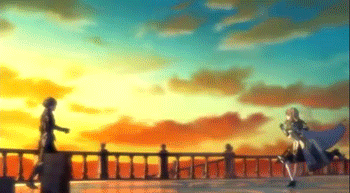


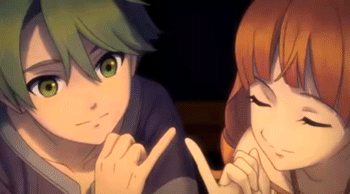
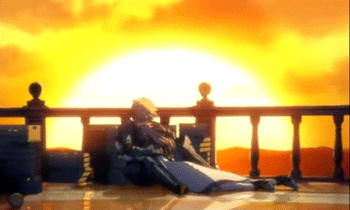
Hey, why did Mila and Duma have to fight so much? Couldn’t they just say they were sorry?
Let’s promise we’ll never end up like that, okay?
Yeah, nothing will ever come between us.
Fire Emblem Echoes: Shadows of Valentia (2017)
#these too are so cute#I can't handle it#fire emblem echoes#shadows of valentia#alm#celica#fire emblem echoes shadows of valentia#thehallofgame gifs
18 notes
·
View notes
Photo

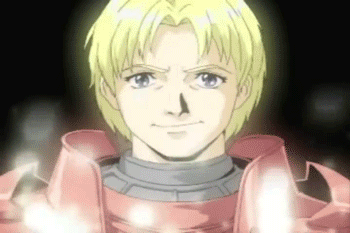

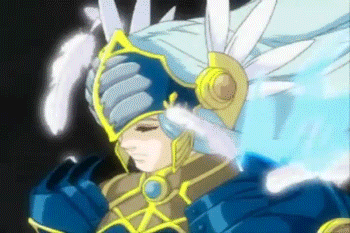


The Gods are at War. You must gather the souls of fallen warriors and train them to fight at Odin’s side. From the Creators of Star Ocean: The Second Story, Valkyrie Profile sets new standards for role playing games on the Playstation game console.
Valkyrie Profile (1999)
#I finally found a copy of the original#it's missing the manual though#so hit me up if you happen to have one laying around#I'll happily pay for it#valkyrie profile#lezard valeth#lenneth valkyrie#thehallofgame gifs
31 notes
·
View notes


